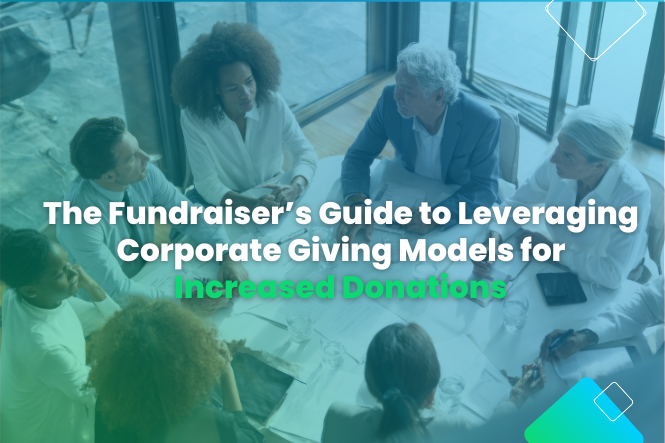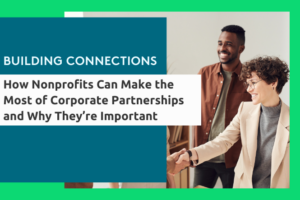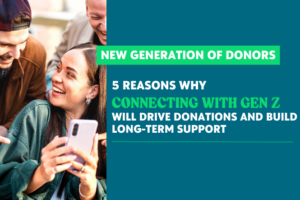The Fundraiser’s Guide to Leveraging Corporate Giving Models for Increased Donations

October 6, 2025 | 6 min read
In collaboration with Double the Donation
Key Takeaways:
- Understanding a company’s giving model allows fundraisers to tailor their engagement strategies, whether through direct relationship building, aligning with ESG priorities, or maintaining a visible online presence on workplace giving platforms.
- Companies typically have one of three main approaches to giving: targeted, structured, and open.
- Workplace giving, including payroll deductions and company matching gifts, is a valuable solution for nonprofits to establish corporate partnerships and secure recurring donations.
- An estimated $4-$7 billion in company match dollars are left unclaimed annually, highlighting a significant untapped funding source for nonprofits.
For many nonprofits, securing corporate partnerships and establishing recurring donations often feel like separate challenges. What if one powerful strategy could help win both? We teamed up with our friends at Double the Donation to show you how workplace giving can be the single most powerful tool for building a predictable pipeline of corporate support.
One of the most impactful workplace giving programs is payroll deductions, where employees specify the dollar amount or percentage of their paycheck to divert to the nonprofit of their choice. This is usually further amplified by a company match, which can double, or even triple, the donation amount a nonprofit receives. These payroll contributions are deducted from each paycheck until the employee halts them or leaves the company. Payroll deductions are a set-it-and-forget-it strategy, which, from a fundraiser’s perspective, mimics a sustaining donor.
Workplace giving programs are available to 27 million Americans and generate $5 billion in donations in the United States annually. This includes payroll deductions, dollars for doers, employer-sponsored matching gifts, and more. While that $5 billion is a considerable sum, it may come as a surprise that an estimated $4 – $7 billion of company match dollars are left on the table and go un-donated every year.
As The Blackbaud Giving Fund continues to study workplace giving, we identified three successful corporate giving program models and how nonprofits can engage with companies using each method: a targeted, structured, and open approach.
Each unique approach can benefit nonprofits when fundraisers understand how the programs are structured and how to leverage relationships to create mutually beneficial partnerships.
A Targeted Approach to Corporate Giving
Goal: Position yourself as a core community partner.
A targeted approach is when an employer, typically a smaller or regional company, encourages and incentivizes giving and volunteering to a select group of charities. Generally, these programs have high employee participation rates, usually 90% or higher, in the focus area. The top ten nonprofits they donate to receive between 50% and 100% of their support.
When fundraisers know that a company in their area actively pursues social good, they have a prime opportunity to create meaningful, lasting relationships with companies and their employees, especially if their cause aligns with the company’s ESG goals and values. Given the model’s high participation and support rate, it presents a valuable opportunity to form a mutually beneficial partnership with a local company that prioritizes supporting local causes impacting their community.
A Structured Approach to Corporate Giving
Goal: To align your mission with a company’s ESG strategy.
A structured approach takes a broad view of a company’s ESG priorities and leverages resources to support initiatives and causes that are meaningful to the company. These companies are typically larger and publish their ESG strategy on their website, which often includes supporting their employees’ volunteer efforts and donations to specific community causes.
Companies using this approach focus on the larger-picture outcomes resulting from their investments. Programs that follow this model often have significant employee participation, often between 25% and 55%, which is strong considering the size of these companies. The approach often supports many local nonprofits, and the top ten nonprofits they support receive between 2% and 24% of a company’s monetary support.
If a fundraiser believes a company is taking a structured approach to giving, they can compare how their nonprofit’s cause aligns with the company’s ESG goals and priorities by accessing the publicly available information, often within the annual report. If the two organizations’ goals and priorities are aligned, fundraisers should connect with the company to establish a relationship. A company-wide volunteer event is a great place to start. This will get employees involved so they can better understand the nonprofit’s impact and how it is critical in addressing essential community needs. This is an excellent opportunity for fundraisers to create relationships with volunteers, showcase the impact of their efforts, and encourage them to extend their support into other avenues.
An Open Approach to Corporate Giving
Goal: To maximize digital visibility and presence.
A company with an open approach to volunteering and giving is usually a larger corporation with offices or operations in several locations. They typically have company matching programs and volunteering incentives, but don’t necessarily prioritize a specific cause or sustainable development goal (SDG). The company aims to give back and encourages its employees to do the same, but lacks specific goals for the types of nonprofits it supports. Generally, about 20% – 55% of their employees participate in giving to or volunteering with a nonprofit. Since employees typically choose the cause and nonprofit they support, these companies can donate to thousands of nonprofits, with the top 10 nonprofits receiving between 2% and 27% of their total support.
If a fundraiser knows a large company has operations in their area, and their published information points to an open approach, it’s important that the nonprofit is visible to employees who want to donate to nonprofits. Signing up for and keeping a robust and active profile on workplace-giving sites like Blackbaud Verified Network can help employees find and select your organization to support through the tools available in their CSR program. If fundraisers identify through their platforms that groups of employees are regularly donating to their nonprofit, they can work to deepen their relationships with the employees by creating stewardship programs that may involve volunteer opportunities. The goal is to increase visibility to these employees, making them more engaged with your organization.
When fundraisers understand how the companies in their area operate and have an idea of their charitable giving models, it can help them identify the best strategy for connecting with purpose-driven companies and becoming an integral part of their giving programs. Familiarize yourself with these leading models of philanthropy to discover which companies are donating to organizations like yours.
Ready to promote your nonprofit to over 8 million potential donors with access to a workplace giving program? Sign up for Blackbaud Verified Network and read tips on optimizing your free profile, leveraging volunteer events for increased donations, and other free resources on our blog. It’s time to unlock a new era of corporate support for your organization!
For more information about Blackbaud Verified Network or to sign up, visit https://nonprofit.yourcause.com/login/create-account.
Follow The Blackbaud Giving Fund on LinkedIn, Facebook, and Instagram for updates, news, and more.


